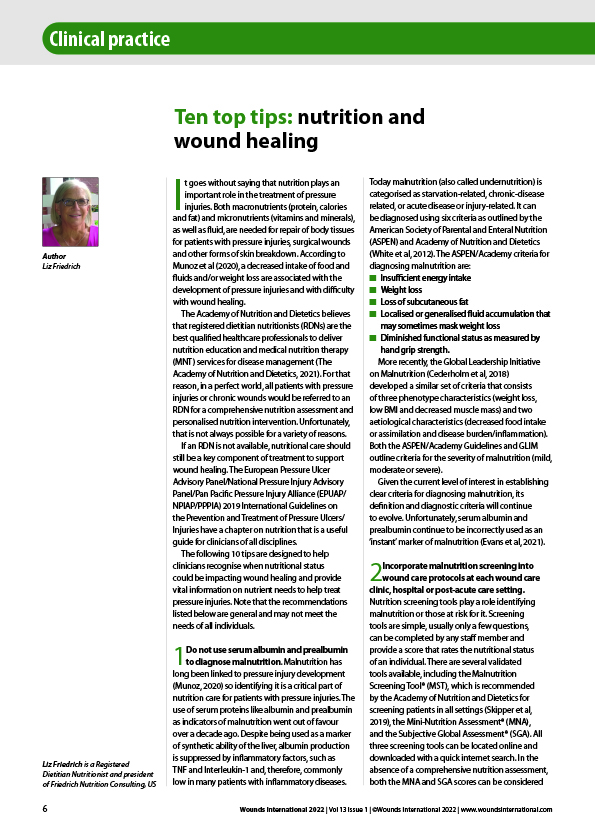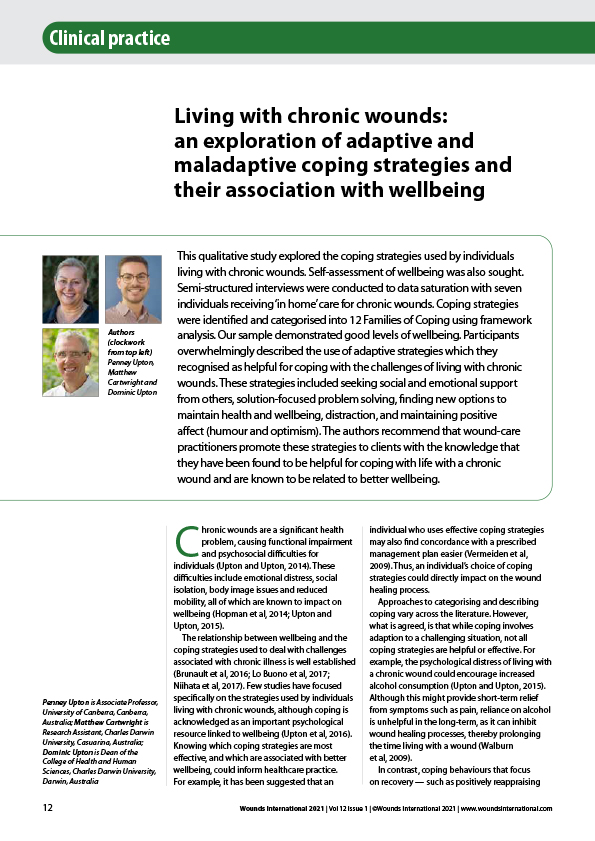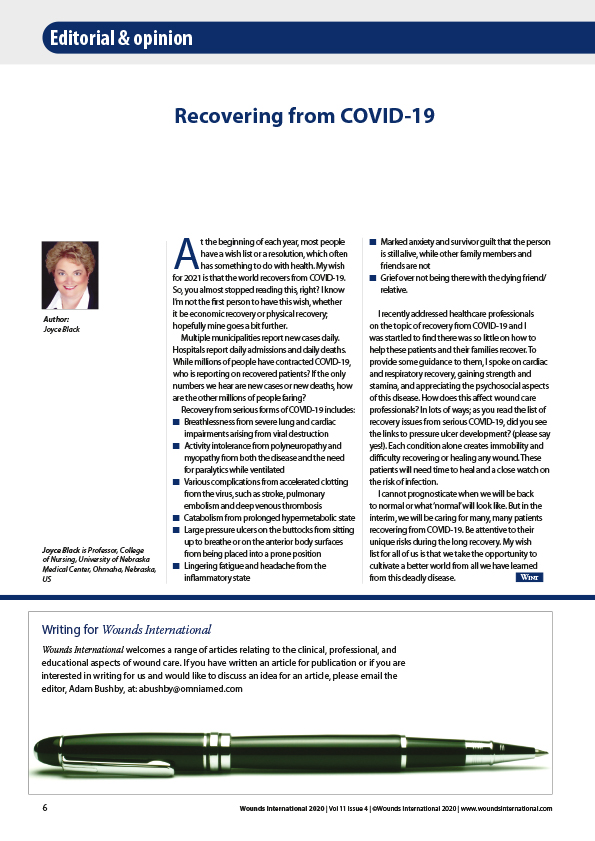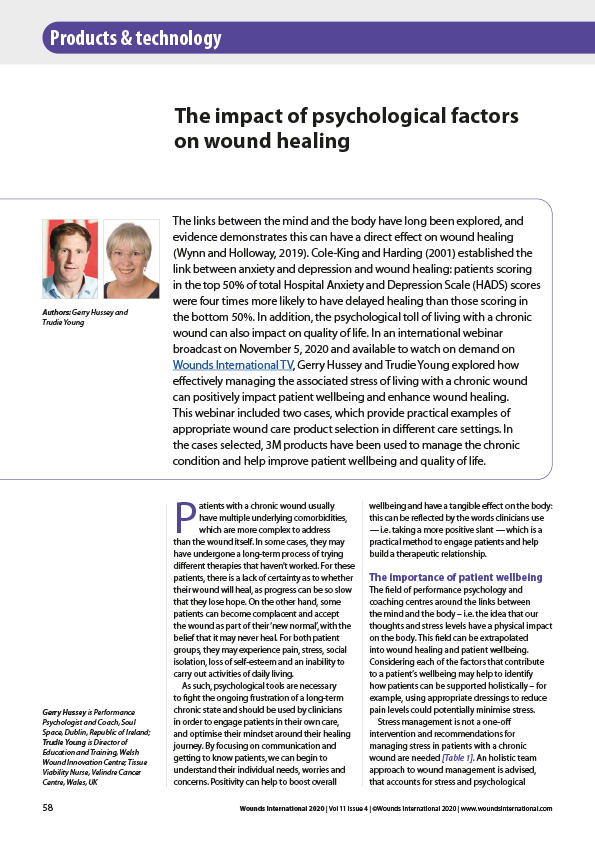<p>Throughout history, the ways wounds have been understood and managed in relation to the patient’s body has altered in line with social trends of the times. Today, the need to find efficient and effective ways to address the growing burden of chronic wounds has fuelled unprecedented advances in scientific knowledge of tissue repair and an exponential growth in new technologies designed to speed up this process. Despite calls to “assess and treat the whole person and not the hole in the person”, the ongoing reductionist approach of Western medicine to treating symptoms, rather than their cause, means that ‘quality’ wound practice remains heavily oriented towards local wound interventions.</p>






